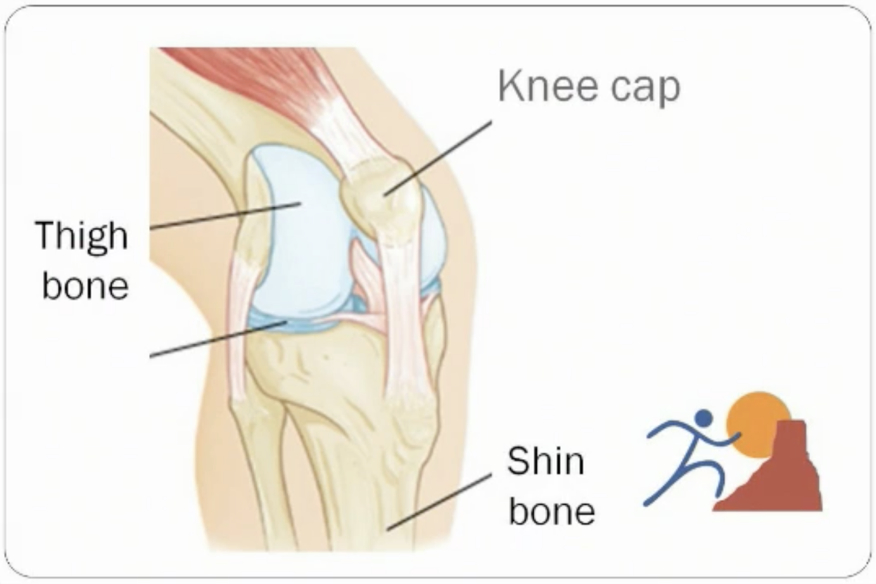Kneecap Pain
August 25, 2022
Hello and welcome to Yuma Health and Happenings. I’m Dr. Ron Clark, Orthopedic Surgeon and founder of The Bone and Joint Center of Yuma. Today I want to talk about the knee’s fantastic form and functions. We’ll also discuss what happens when the knee gets damaged and stops performing those functions.
The knee is formed by the thigh bone, called the femur, and a lower leg bone, called the tibia. The knee joint can be compared to a rocking chair that moves back and forth to allow for bending and straightening. This joint consists of bone and is covered by a softer tissue, known as cartilage, which cushions and lubricates the bones during movement. Between the two major bones of the knee is the kneecap, or patella, that connects the front muscles of the thigh to the front of the shin bone.
Pain on the Inside of the Kneecap
For some reason that is not well understood by doctors, pain can often develop around the kneecap that is constant, usually low in intensity, and does not seem to be associated with a specific injury or fall. Most individuals with this type of pain are girls between the ages of 13-16. This age in young women corresponds with the completion of growth, and some think an imbalance between muscle and bone development may be involved. Boys with this type of pain are usually between 14 and 17.
Diagnosing Kneecap Pain
Because pain can represent many possibilities, each patient with knee pain is carefully assessed with a physical examination and often with x-rays. Although exceedingly rare, bone tumors can grow in young people, and the possibility should be considered. The kneecap receives a lot of force from walking, running, and stair climbing. Sometimes the knee is achy just sitting in a car, theatre, or at a desk in school.
In evaluating an individual with knee pain, a doctor will ask questions related to activities such as sports, stair use at home or school, and how frequently you notice the pain. Since pain medicines like ibuprofen or naproxen can be used without a prescription, these are also considered. When all other sources of knee pain or problems are ruled out, the term chronic anterior knee pain is used. This term simply refers to the fact that there is an ongoing pain in the front of the knee.
Symptoms of this type of problem include popping or cracking in the knee when climbing stairs or getting up from a chair, pain at night, pain after sporting activities, or pain that seems to worsen slowly throughout the day. In analyzing the nature and type of discomfort, the doctor will want to be sure not to miss any condition that has a known cause and treatment.
How to Relieve Kneecap Pain
Many theories related to the cause of chronic anterior knee pain have been considered. Some individuals’ kneecaps may tilt to one side, so braces have been developed to pull the kneecap in the opposite direction. Surgical procedures can also re-align the kneecap over the front of the knee and better balance the forces between the kneecap and the thigh bone. In most situations, there is no measurable deformity or misalignment of the kneecap, so bracing or surgery is not appropriate.
Exercises to strengthen the knee are helpful for many with this condition, so physical therapy can be helpful. Therapists will assess the muscles in the thigh and leg and then work on ways to stretch and strengthen them.
In my experience, the simplest and least expensive treatment for this problem is a program of progressive bicycling. This involves starting with an easy 5-minute ride and adding a minute each day until a 20-minute ride is attained. This duration is maintained, but resistance to the workout is increased by either riding faster or adjusting the resistance using an exercise cycle. I tell my patients that this program usually needs to be done for at least two months to see an effect.
Adjusting Your Activity Level
When this condition is associated with youth involved in sports, there must be some adjustment to the workout schedule and participation as the pain is likely due to over-use. Team sports have workouts that are designed to push the most capable participants. Not all team members have equal capacity and ability, so the activities will likely overtax some people’s capabilities and lead to pain.
Applying cold, anti-inflammatory medications and stretching after workouts are also helpful. For those not participating in team sports, a careful assessment of the frequency and duration of exercises should be evaluated. The good news is that this condition, although frustrating and annoying, does not seem to be related to any long-term disability or changes in arthritis in the future.
This seems to be a condition that virtually all individuals will “grow out of.” There is an old saying amongst doctors for such problems that states, “the treatment can be worse than the disease.” Careful consideration should be given to treatment recommendations like surgery with chronic anterior knee pain.